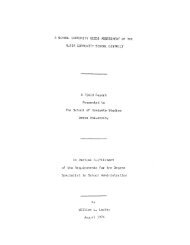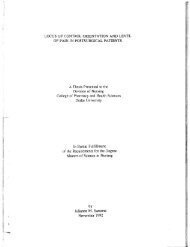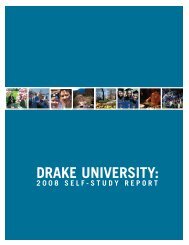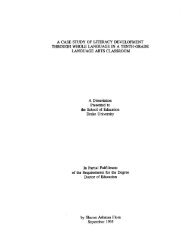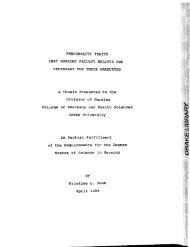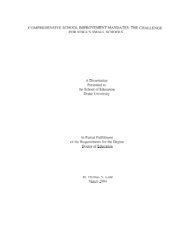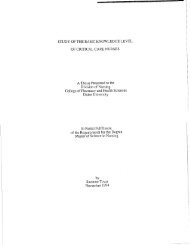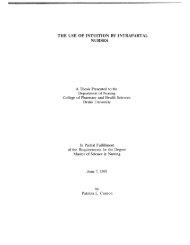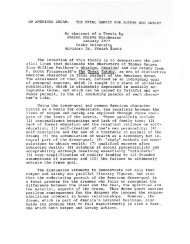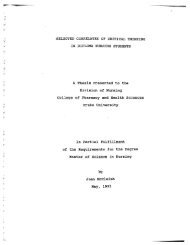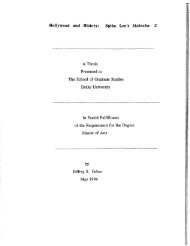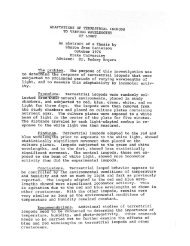LEADERSHIP CHARACTERISTICS OF ... - Drake University
LEADERSHIP CHARACTERISTICS OF ... - Drake University
LEADERSHIP CHARACTERISTICS OF ... - Drake University
You also want an ePaper? Increase the reach of your titles
YUMPU automatically turns print PDFs into web optimized ePapers that Google loves.
Table 21<br />
Demographic Factors Related to Leadership Style<br />
Demographic Factors Transformational Transactional Passive-avoidant<br />
Leaders hip Leadership Leadership<br />
Years of Experience Pearson<br />
Correlation -.313(*) -.292(*) .084<br />
Sig. (2-tailed) .024 .036 .556<br />
Hours of Leadership Pearson<br />
Training Correlation<br />
Sig. (2-tailed)<br />
N 52 52 52<br />
Pearson<br />
Correlation<br />
Sig. (2-tailed)<br />
N<br />
N<br />
Hospital Size Pearson<br />
Correlation -106 .054 -. 102<br />
Sig . (2-tailed) .423 .687 ,456<br />
N 59 59 59<br />
** Correlation is significant at the 0.01 level (2-tailed).<br />
* Correlation is significant at the 0.05 level (2-tailed).<br />
The leadership styles of CEOs were compared to hospital setting in<br />
which the CEOs worked using an independent-samples T test. The<br />
results indicated a significant variance in findings relative to<br />
transformational leadership style and hospital. Because the homogeneity<br />
of variance yielded a statistical significance in all setting types, a Kruskal-<br />
Wallis test was performed to identify the outliers and discover where the<br />
variability occurred (Table 22). The findings indicated that a significant<br />
difference is identified at the transactional leadership level. Further<br />
analysis of the data provided in Table 23 indicated that rural referral



